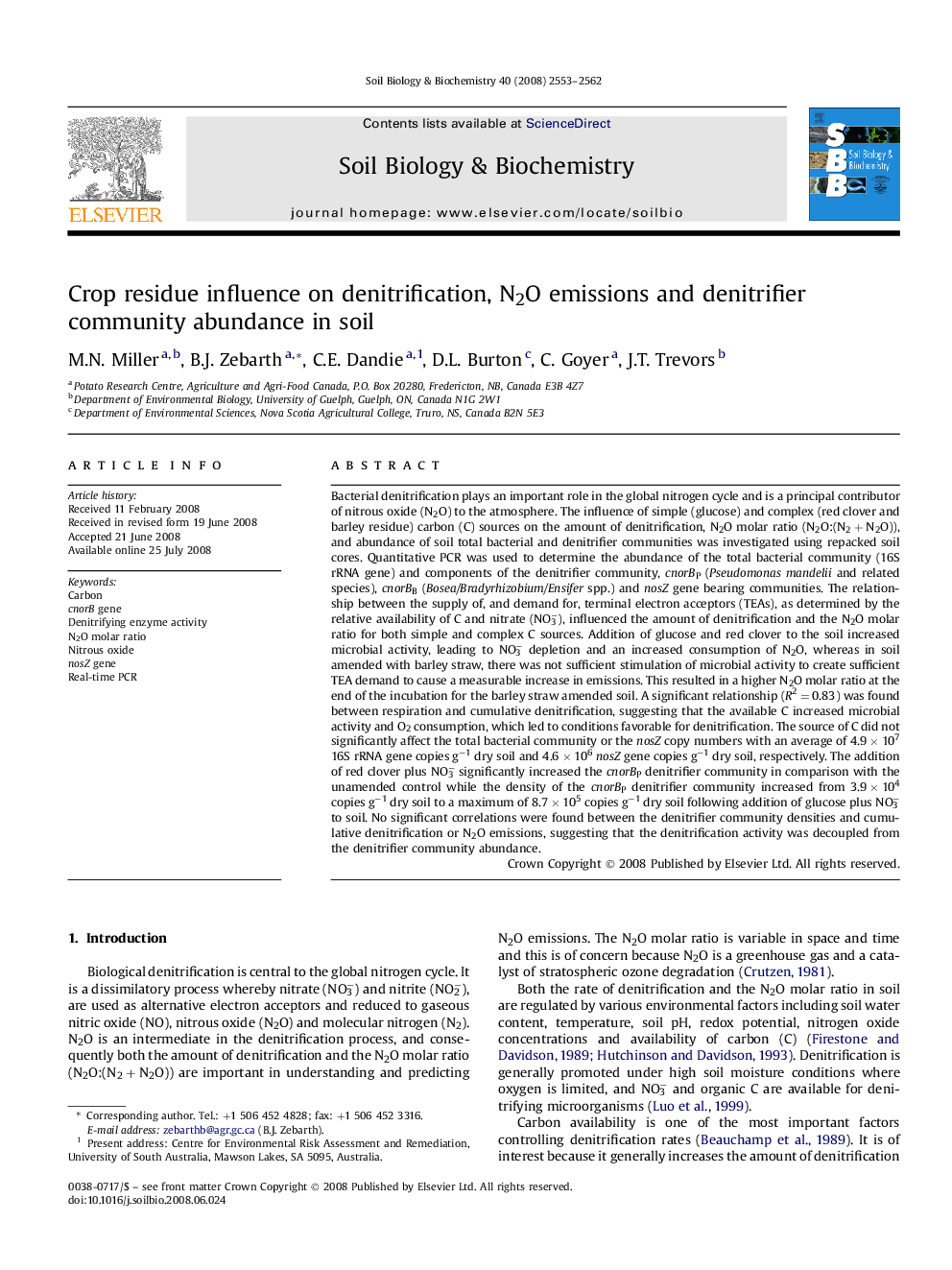| کد مقاله | کد نشریه | سال انتشار | مقاله انگلیسی | نسخه تمام متن |
|---|---|---|---|---|
| 2025656 | 1070005 | 2008 | 10 صفحه PDF | دانلود رایگان |

Bacterial denitrification plays an important role in the global nitrogen cycle and is a principal contributor of nitrous oxide (N2O) to the atmosphere. The influence of simple (glucose) and complex (red clover and barley residue) carbon (C) sources on the amount of denitrification, N2O molar ratio (N2O:(N2 + N2O)), and abundance of soil total bacterial and denitrifier communities was investigated using repacked soil cores. Quantitative PCR was used to determine the abundance of the total bacterial community (16S rRNA gene) and components of the denitrifier community, cnorBP (Pseudomonas mandelii and related species), cnorBB (Bosea/Bradyrhizobium/Ensifer spp.) and nosZ gene bearing communities. The relationship between the supply of, and demand for, terminal electron acceptors (TEAs), as determined by the relative availability of C and nitrate (NO3−), influenced the amount of denitrification and the N2O molar ratio for both simple and complex C sources. Addition of glucose and red clover to the soil increased microbial activity, leading to NO3− depletion and an increased consumption of N2O, whereas in soil amended with barley straw, there was not sufficient stimulation of microbial activity to create sufficient TEA demand to cause a measurable increase in emissions. This resulted in a higher N2O molar ratio at the end of the incubation for the barley straw amended soil. A significant relationship (R2 = 0.83) was found between respiration and cumulative denitrification, suggesting that the available C increased microbial activity and O2 consumption, which led to conditions favorable for denitrification. The source of C did not significantly affect the total bacterial community or the nosZ copy numbers with an average of 4.9 × 107 16S rRNA gene copies g−1 dry soil and 4.6 × 106nosZ gene copies g−1 dry soil, respectively. The addition of red clover plus NO3− significantly increased the cnorBP denitrifier community in comparison with the unamended control while the density of the cnorBP denitrifier community increased from 3.9 × 104 copies g−1 dry soil to a maximum of 8.7 × 105 copies g−1 dry soil following addition of glucose plus NO3− to soil. No significant correlations were found between the denitrifier community densities and cumulative denitrification or N2O emissions, suggesting that the denitrification activity was decoupled from the denitrifier community abundance.
Journal: Soil Biology and Biochemistry - Volume 40, Issue 10, October 2008, Pages 2553–2562